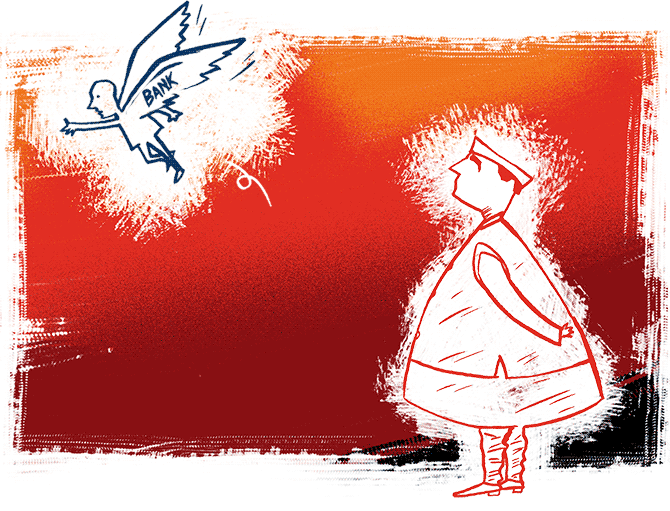This trend has not been seen in nearly two decades, barring 2016 — the year of demonetisation.

Record liquidity infusion by the central bank in the banking system during the financial year 2020-21 amid sluggish economic activity resulted in banks investing more in safe government papers than in extending loans, data from Reserve Bank of India (RBI) showed.
This trend has not been seen in nearly two decades, barring 2016 — the year of demonetisation.
According to RBI data, banks invested Rs 7.2 trillion in government bonds compared to Rs 5.8 trillion extended as loans in 2020-21.
The last financial year witnessed huge liquidity infusion by the RBI following the contraction in GDP owing to the Covid-19 related lockdown.
The central bank managed a government borrowing programme of a record Rs 12 trillion.
At the same time, credit demand remained anaemic, growing 5.6 per cent in 2020-21 against 6.1 per cent in the previous financial year.
“This is a reflection or a consequence of large liquidity injection by RBI and weak growth,” said Anubhuti Sahay — head of economic research, South Asia, Standard Chartered Bank.
The government has projected GDP growth to have contracted by 8 per cent in 2020-21 against a 4 per cent growth in the previous year.
“Because of weak credit demand, banks are investing or reinvesting this liquidity in bonds.
"It is a by-product of the twin factor that is large liquidity injection and weak growth,” Sahay told Business Standard.
The financial year 2020-21 ended with a total credit expansion of Rs 5.8 trillion by scheduled commercial banks, a shade lower than Rs 6 trillion in the previous year.
But banks’ investment of Rs 7.2 trillion in government securities was nearly double of their investment in the previous year.
“Banks’ investment in 2020-21 outpaced overall credit extended — a phenomenon not seen in nearly twenty years, barring the year of demonetization,” the RBI observed in the state of the economy report in April.
In 2016, credit expansion by commercial banks was Rs 3.6 trillion against an investment of Rs 9.2 trillion in government securities.
The RBI report said the “feeble” credit growth of 5.6 per cent (in FY21) pointed to continuing risk aversion amidst pandemic-linked impairment to their balance sheets.
When banks choose to park funds in government securities — the safest of all investments — instead of extending loans due to risk aversion, the trend is called lazy banking.
To encourage banks to lend, the RBI took two steps as early as March 2020.
First, it reduced the bank’s cash reserve ratio — the proportion of interest-free cash the banks have to set aside with the RBI — by 100 basis points to 3 per cent in March 2020 to boost liquidity in the banking system.
Second, it cut the reverse repo rate — or the rate at which banks keep their excess liquidity with the central bank — 90 basis points to make it unattractive for banks to park funds with RBI.
But this did not alter the trend appreciably.
Some of the sectors that experienced expansion in bank credit were agriculture, and the services sector, propelled by strong disbursals to trade, tourism, transport and to other services.
According to RBI data, in the retail loan segment, loans for consumer durables and other personal loans posted robust growth, and there was a strong pickup in loans against gold jewellery.
“However, credit to industry remained a drag.
"Taking advantage of the easy financing conditions, the corporate sector raised substantial funds from financial markets, which was mainly used for deleveraging.
"Credit growth to medium industry and micro and small industries turned out to be resilient and performed better year-on-year,” the RBI report said.
Deposit growth remained sturdy in double digits clocking 11.4 per cent at the year end.
With infections surging again, which forced many state governments to re-lockdown, any recovery in growth will be pushed back. Large liquidity surpluses are likely to continue, with credit demand not likely to pick up any time soon.
This could mean the gap between investment and credit will persist.
Some analysts have lowered India's GDP growth projection for the current financial year due to the second wave of infections.
“Last year, the ECLGS [Emergency Credit Line Guarantee Scheme] was a major factor for credit growth for the MSME sector.
"That is not available at this point in time but the government may look at such a scheme once the second wave ebbs,” said Sameer Narang, chief economist, Bank of Baroda, adding a part of corporate credit has moved to the bond market because of the excess liquidity that is likely to remain in surplus.
The central bank has promised to ensure ample liquidity in the system during the April review of the monetary policy while announcing bond buying schedule, akin to quantitative easing programme of developed nations.
Narang said since a sustainable recovery is only expected in the next financial year, the current financial year may also end up with higher investment by banks than credit.
“Credit growth is expected to pick up momentum only in the second half, once the second wave ebbs.
"But for a sustainable recovery we are looking at FY23, when credit growth should take over investment growth.
"Even as the economy opens up, fuller recovery is contingent on vaccination, which is likely to be visible only by the third or fourth quarter — when a larger share of the population will get both the vaccine doses.
"So, it is likely that next year we can see a sustainable increase in credit growth," Narang said.
Standard Chartered’s Sahay said the gap between investments and advances will narrow only gradually, and the surplus liquidity conditions are likely to reduce by the third quarter of the current financial year.
“The wedge [banks’ fund deployment in bond versus loans] will continue to narrow as we move into FY22 because credit demand will pick up.
"Maybe by the quarter ended December, we may see RBI reducing rupee liquidity surplus, not tightening but reducing the overall size of liquidity surplus,” she added.











